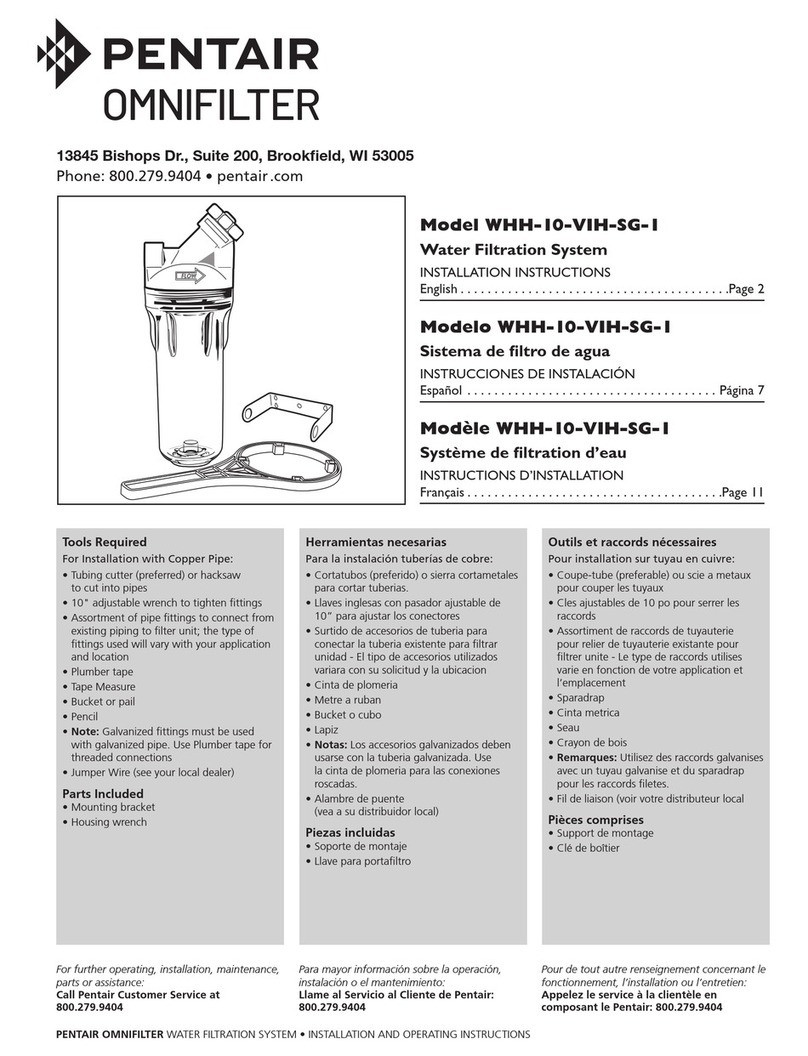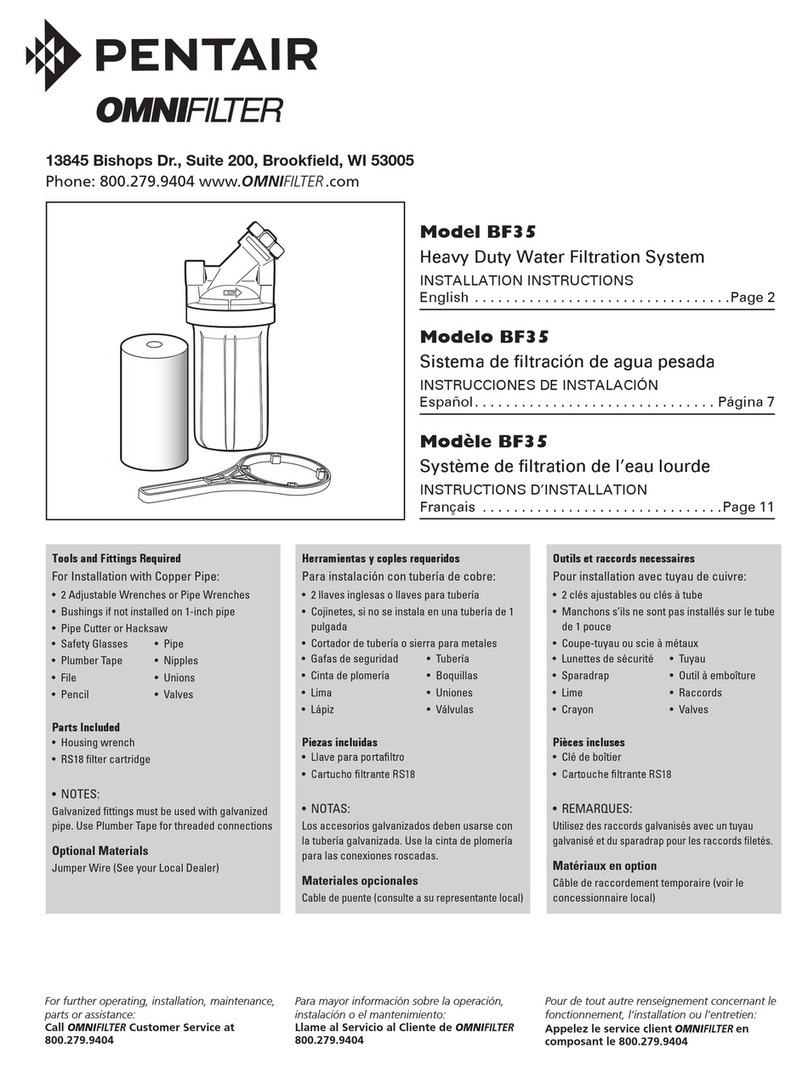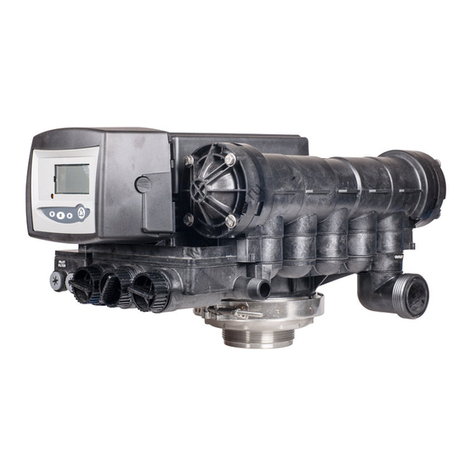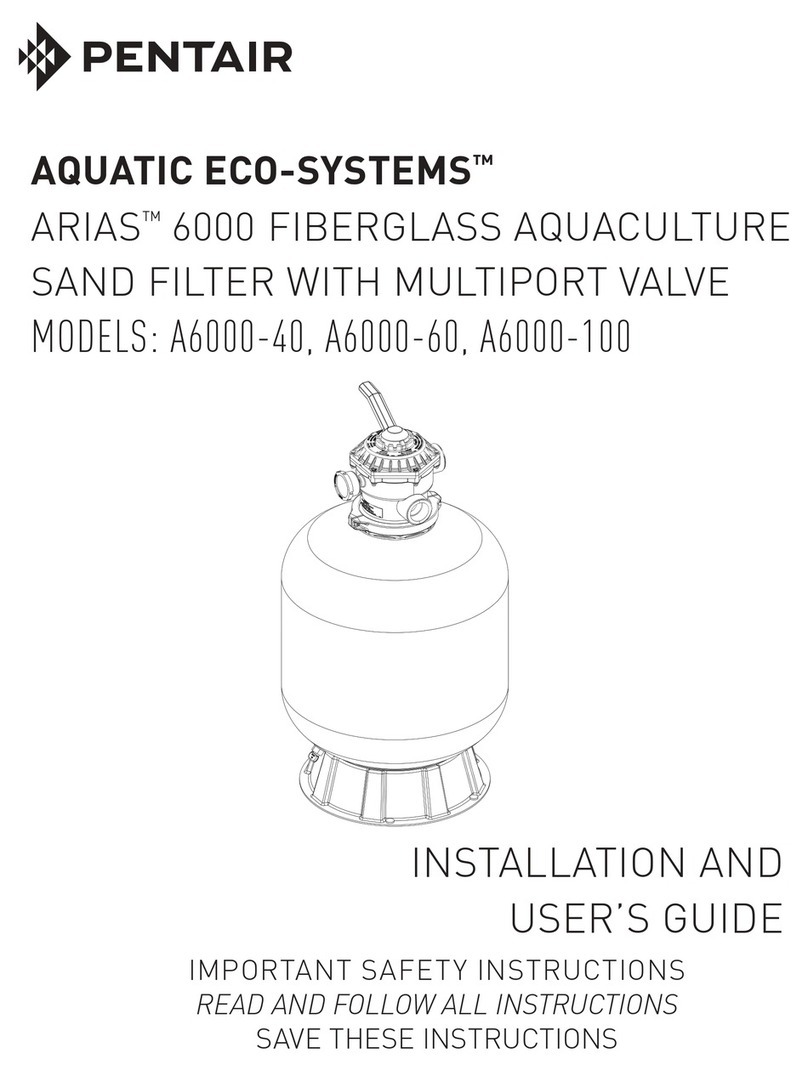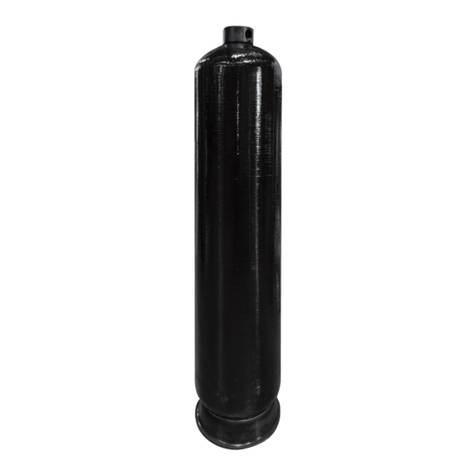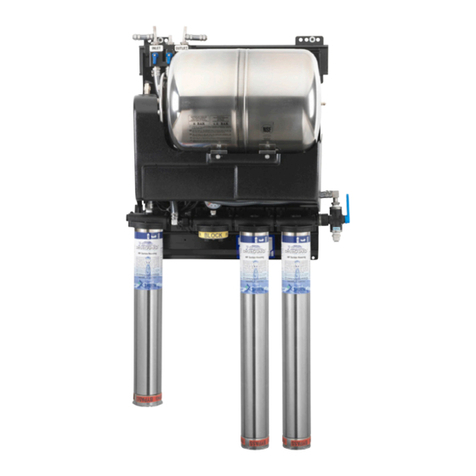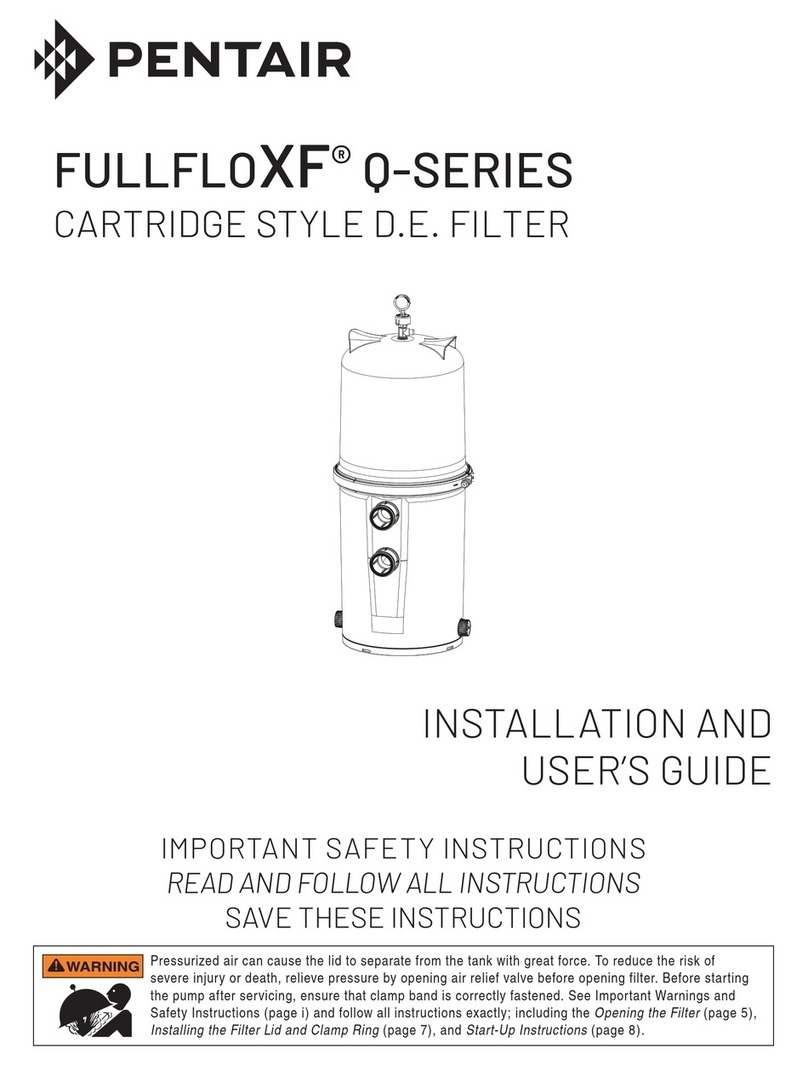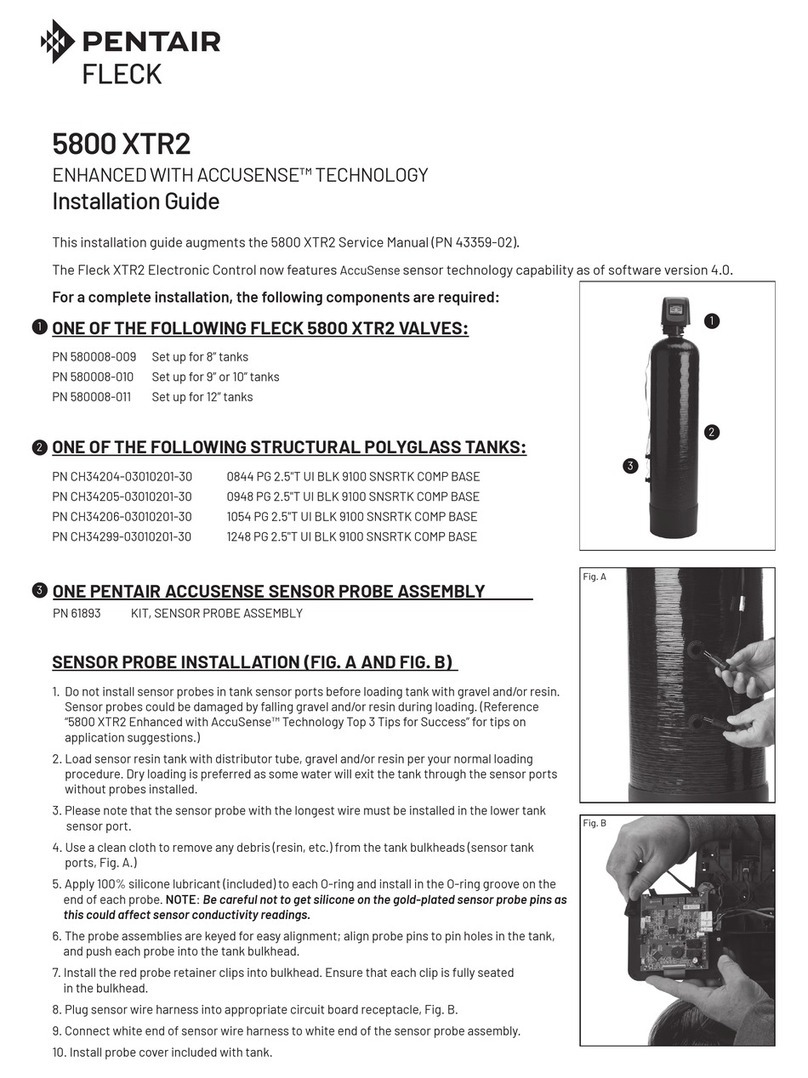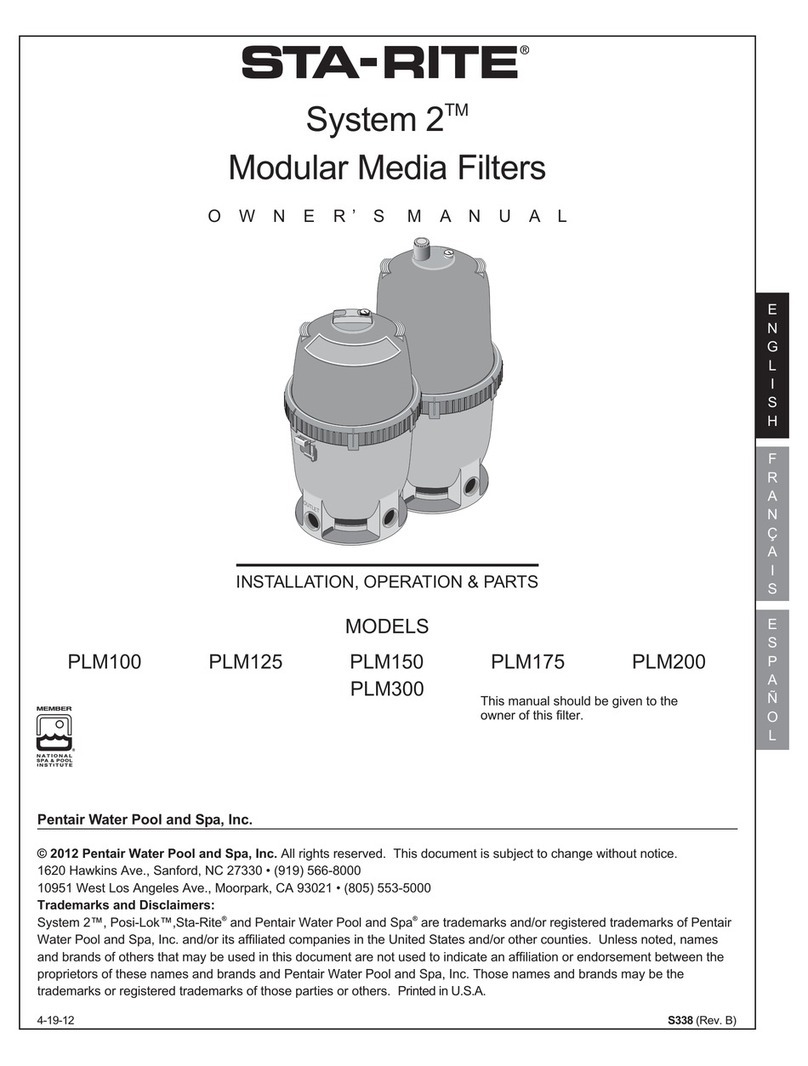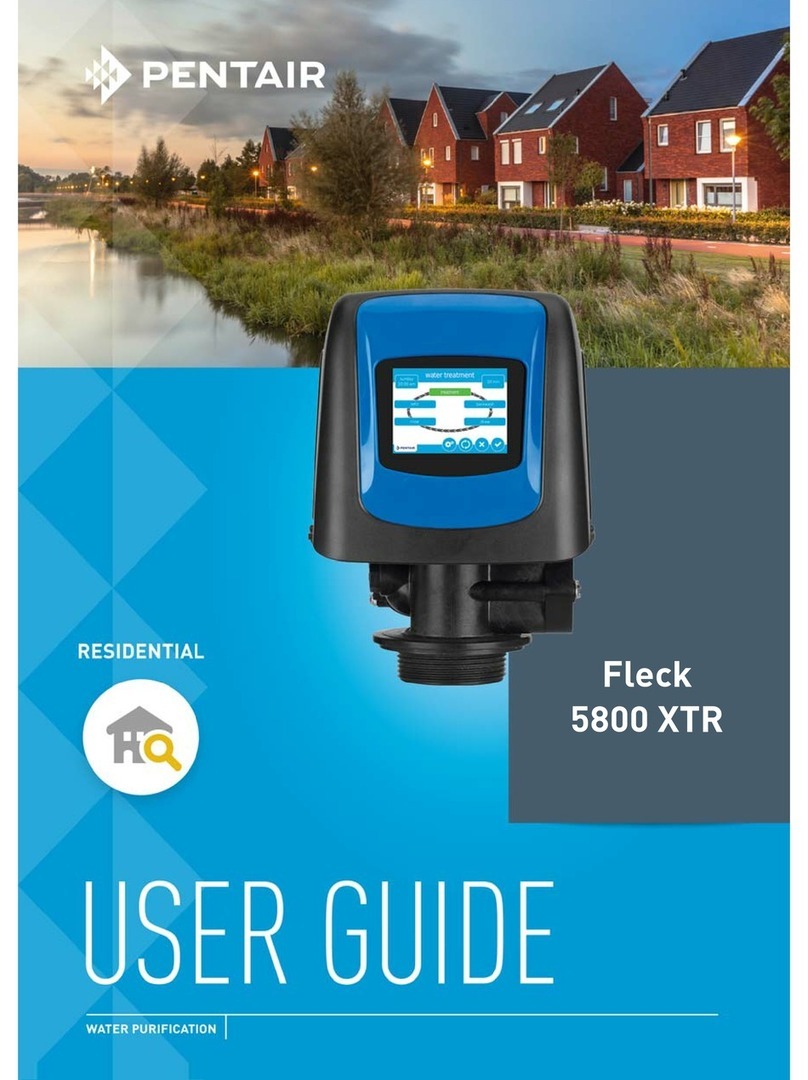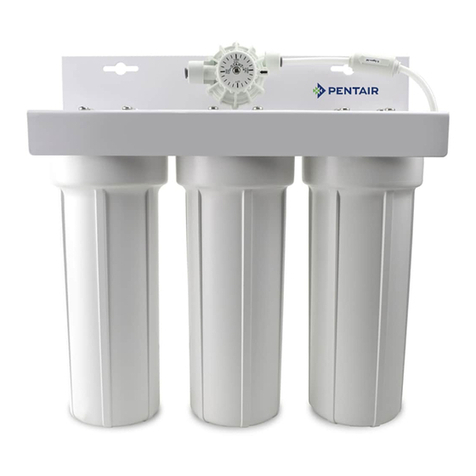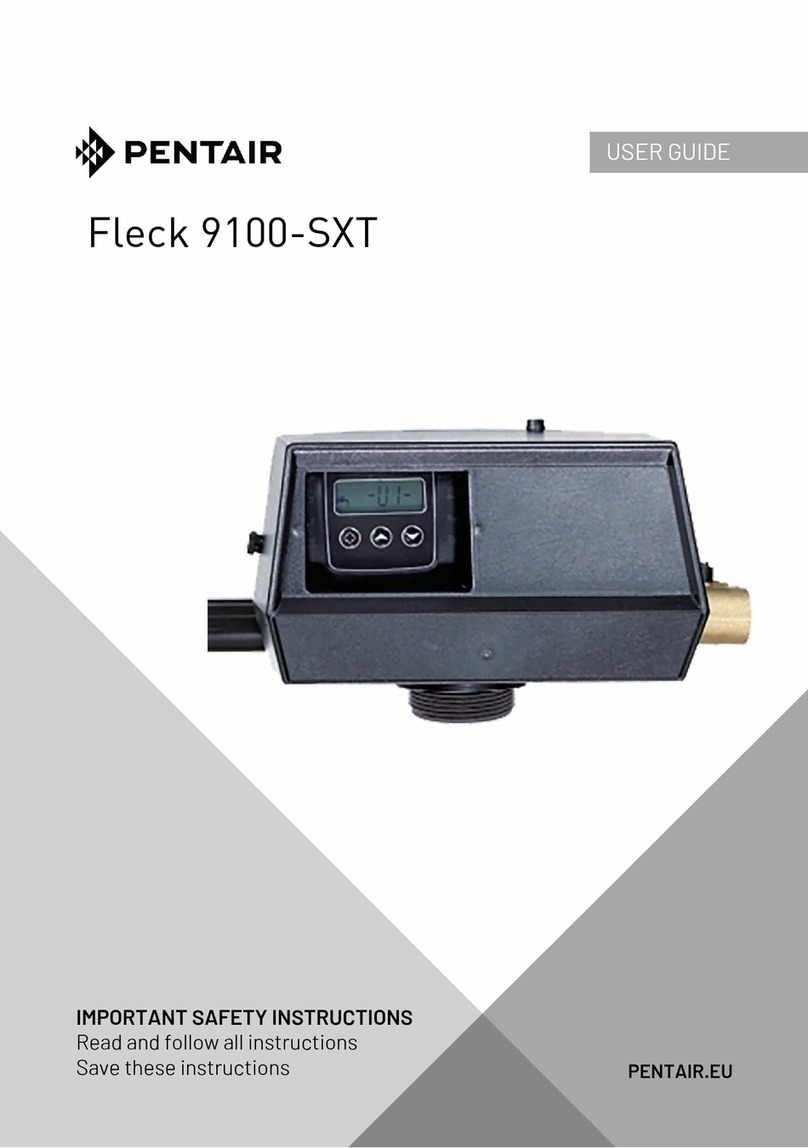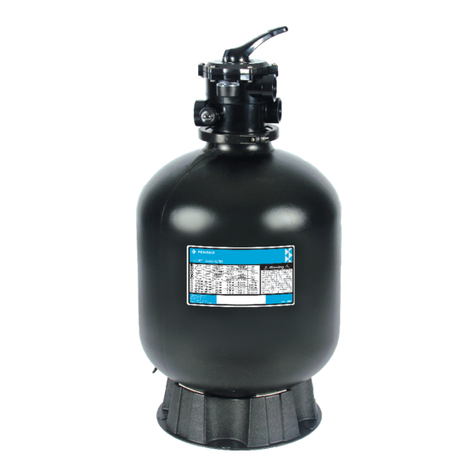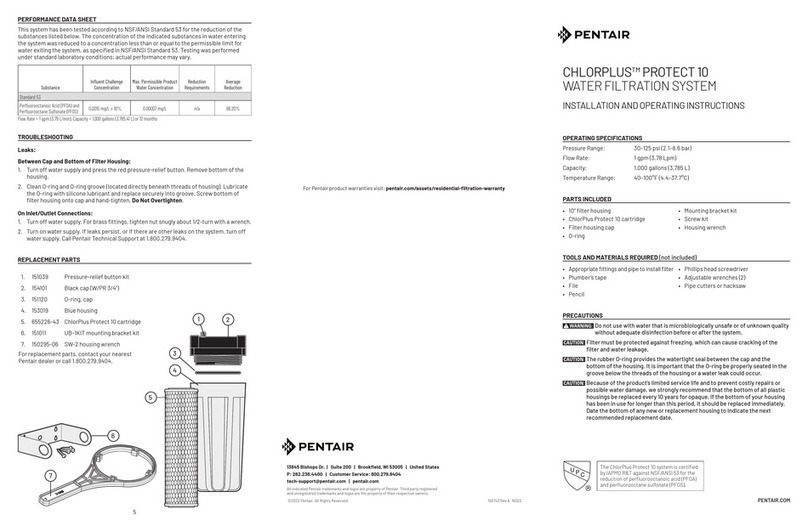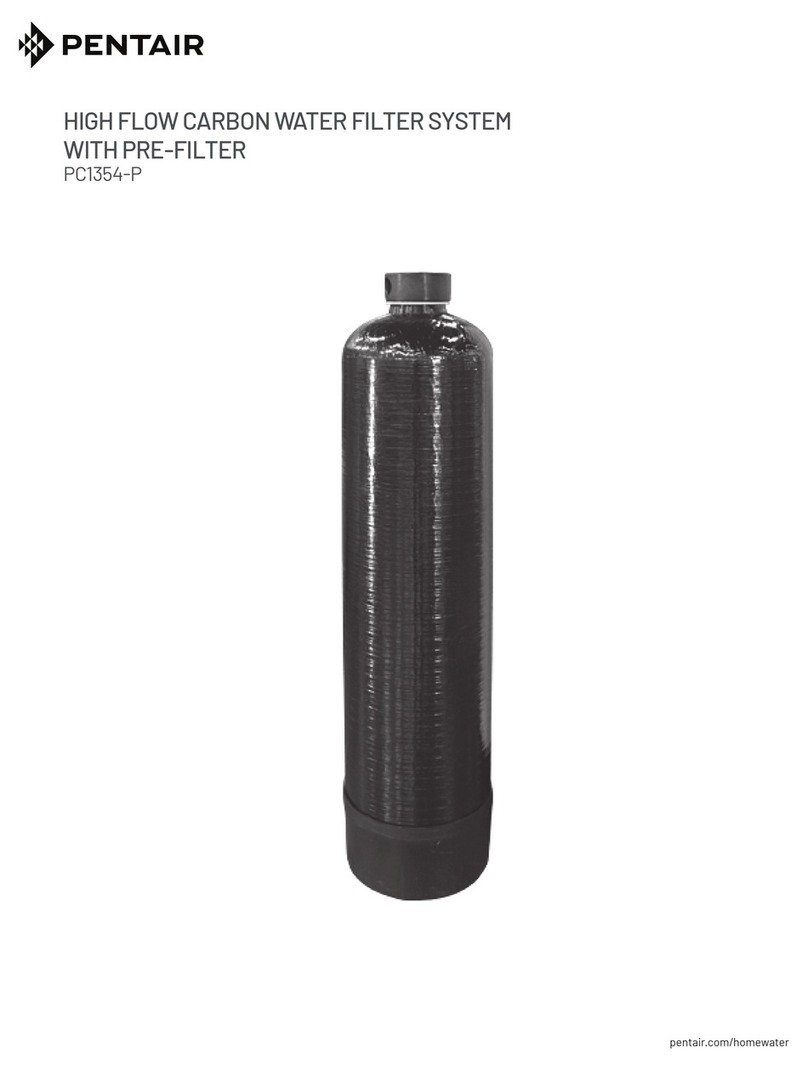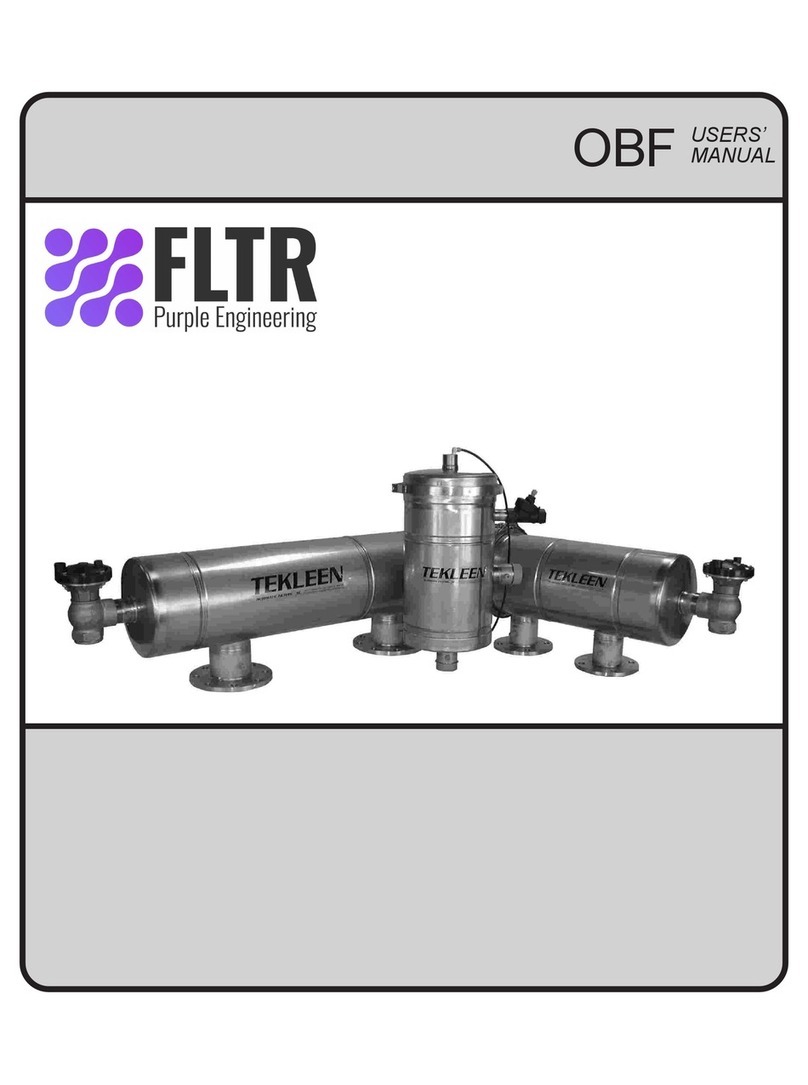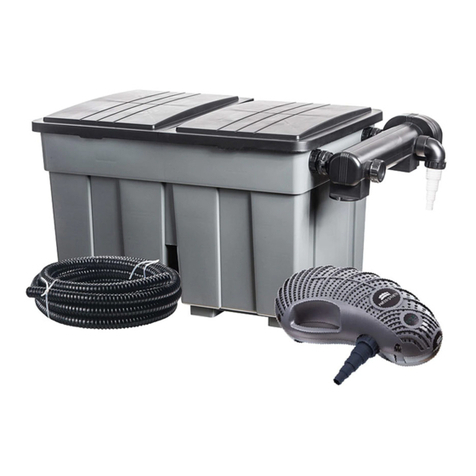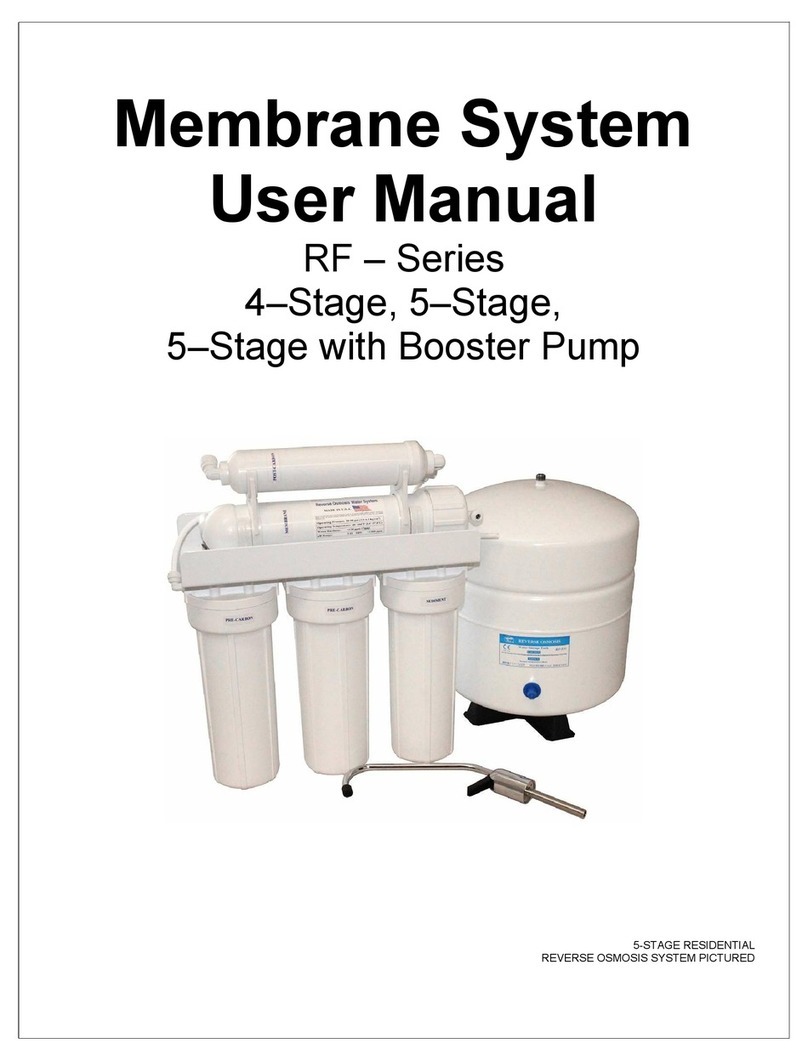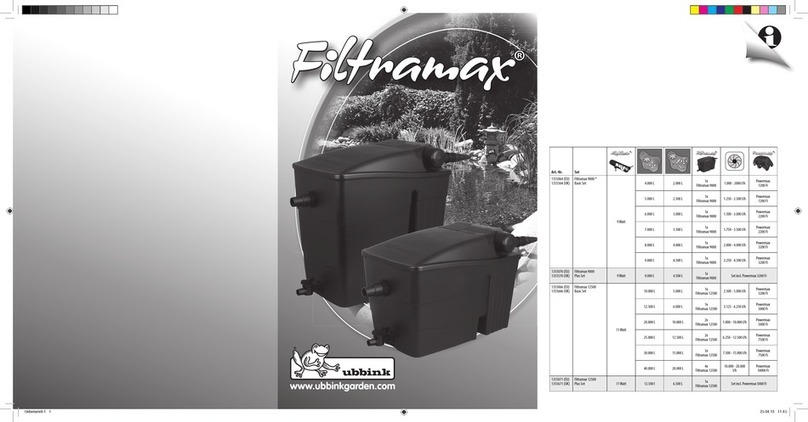
2 3
2 HOW THE LINEGUARD WORKS
2.1 Filtration mode
The LineGuard membrane modules contain hundreds of capillary ultrafiltration (UF) membranes. The
porous walls of these hollow fibers contain billions of microscopic pores which act as an ultra-fine sieve.
The water pressure pushes water molecules and vital minerals from the inside-out through the pores
of the membrane fibers, while retaining larger contaminants such as bacteria, parasites and viruses.
Automated cleaning cycles periodically flush out the contaminants retained inside the membranes. Once
the LineGuard has been installed on the main water supply line, the water is filtered by the membrane
modules.
2.2 Cleaning cycles
Contaminants in the water foul the inner surface of the membranes, which affect the performance of the
system. The LineGuard is equipped with a control unit that sets automated cleaning cycles so that this
fouling is periodically flushed out. There are two types of cleaning cycles: a forward flush and a backwash.
In a forward flush the membranes are flushed with feed water. The feed water flows through the inner
part of the membranes at a much greater speed than in the filtering mode. Because of this high flow and
the resulting turbulence, the fouling on the membrane is released and discharged. The flush water is
discharged to the system drain. Particles that are caught in the membrane pores are not released and can
only be removed with a backwash. Please note that the backwash needs backpressure from the water line
after the system for an optimal cleaning cycle. Whenever the LineGuard discharges to an open system, like
a water tank, the backwash will be not be performed at an optimal level.
A backwash is performed by reversing the filtration process. Filtered water (or permeate as it is called)
is flushed from the outside to the inside of the membranes. This way, particles that are caught in the
membrane pores are released and discharged. In a backwash the LineGuard uses permeate from one
module to backwash the other so that the modules will not foul at the ‘clean side’. The flush water is
discharged to the system.
The LineGuard is set to automatically perform one 30 second flush cycle a day at 01:00 am. Frequency,
duration and time can be adjusted by setting the control unit of the system. The optimal duration and
frequency of the flush cycle depends on the water quality and usage. On average one flush per day should
be sufficient. Your installation company can advise you on the right settings.
A flow sensor will prevent the system from flushing when in use. Whenever water is used at the moment of
a scheduled cleaning cycle the system will wait and resume the cleaning cycle 30 seconds after the water
usage has stopped.
Whenever large quantities of water are used, additional cleaning cycles should be performed. This is done
by setting a flush volume in the control unit. Upon reaching this volume a cleaning cycle will be performed. A
volume flush will overrule the normal flush interval.
Whenever low quality feed water is used, the performance of the system might decrease rapidly. The
performance of a filter module is determined by the “flux” (defined as the quantity of permeate that passes
through the membrane surface per amount of time).
A cleaning cycle can also be performed by setting a flux flush. For example, when a flux flush of 10% is set, a
cleaning cycle will be performed when the flux over the filter modules is decreased by 10%. A flush flux will
overrule the normal flush time interval. A cleaning cycle will take place whenever the flush volume or flux
flush is reached. After the cycle, these settings will be reset.
2.3 Parallel installation of multiple LineGuards
A LineGuard UF-100 has a initial flow rate of 60 l/min (3.6 m3/h). In case more capacity is needed,
parallel installation of up to five LineGuard systems is possible. Please contact your installation company
for details and a preferred installation scheme.
In case multiple LineGuards are installed, they will be part of bigger installation which might have a
constant demand for water that will permantently overrule the flushing cycles. This will have a negative
influence on performance of the system. In this case a flushing overrule should be set (see 4.3.2.7).
The flushing cycles of multiple LineGuard need to be set out-of-phase (see 4.3.2.1)
ENEN

